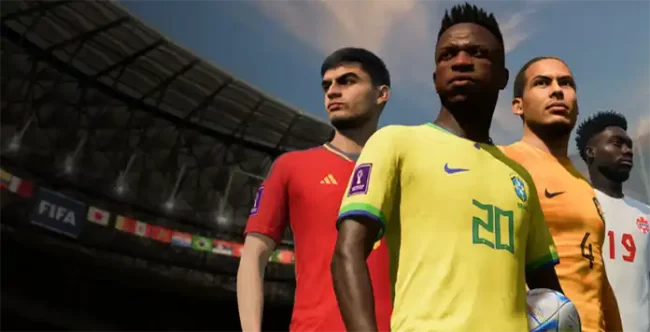Video gaming enthusiasts and soccer fans alike have witnessed a remarkable evolution in the FIFA franchise, with each new edition raising the bar regarding graphics and gameplay. From its humble beginnings in the early ’90s to the sophisticated simulations of today, FIFA has come a long way.
The Early Days – FIFA ’94 to ’98: Pixelated Beginnings
The early FIFA titles were a far cry from the lifelike graphics and fluid animations we enjoy today. FIFA ’94 to ’98 featured pixelated player models and simplistic stadiums. The gameplay was basic, and the controls were relatively rudimentary.
Entering the 21st Century – FIFA 2000 to 2004: A Transition Period
As we entered the new millennium, FIFA made significant strides in graphics and gameplay. The transition from 2D sprites to 3D player models was a game-changer. FIFA 2000 to 2004 introduced more realistic player animations, better ball physics, and improved AI.
The Next Level – FIFA 2005 to 2010: The Road to Realism
The mid-2000s marked a crucial phase in FIFA’s evolution. FIFA 2005 to 2010 featured advanced physics engines, dynamic lighting, and incredibly detailed player faces. The level of realism reached new heights, making it challenging to distinguish the game from a live soccer match.
FIFA 2011 to 2016 – Precision and Authenticity
FIFA 2011 to 2016 further solidified its position as the go-to soccer game. Graphics were sharper, stadiums were incredibly detailed, and the player likenesses were stunningly accurate. Gameplay was defined by precision, with the introduction of the Impact Engine for more realistic player collisions and interactions.
FIFA 2017 to Present – Unparalleled Realism and Immersion
In recent years, FIFA has taken the concept of realism and immersion to unprecedented levels. FIFA 2017 onwards has seen the utilisation of the Frostbite game engine, providing stunning visuals and lifelike player animations. Dynamic weather, pitch degradation, and incredibly detailed player expressions have set new standards for sports simulation. The gameplay has been refined, with improved ball physics, tactical intelligence, and player responsiveness. The FIFA series has become more than just a game; it’s a soccer experience.
FIFA’s Player-Friendly Features – A Unique Offering in the World of Soccer Gaming
In the realm of soccer gaming, a unique offering has gained popularity – pleasant bonuses without wagering requirements. These features have captivated players looking for fair and transparent ways to enjoy FIFA without the burden of stringent conditions. Accessing in-game bonuses without being tied to excessive requirements ensures a more enjoyable and accessible gaming experience for enthusiasts worldwide.
Conclusion – FIFA’s Ever-Evolving Legacy
The FIFA franchise has undoubtedly come a long way since its inception. With each new release, it continues to set the benchmark for sports simulation games. The journey from pixelated graphics and rudimentary gameplay to stunningly realistic visuals and immersive experiences is a testament to the dedication of the developers. FIFA’s evolution showcases the gaming industry’s commitment to pushing the boundaries of what’s possible. As we look to the future, it’s exciting to ponder how FIFA will continue to raise the bar regarding graphics and gameplay, ensuring that fans and gamers worldwide remain captivated by the beautiful game.
